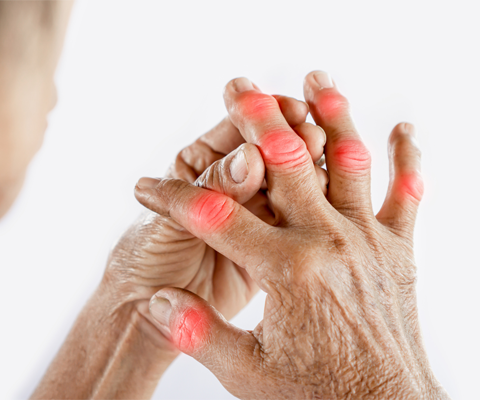 Question: I have both Ankylosing Spondylitis and Osteoarthritis, and so I was wondering if there were ways or things I could do to reduce inflammation to help treat my arthritis.
Question: I have both Ankylosing Spondylitis and Osteoarthritis, and so I was wondering if there were ways or things I could do to reduce inflammation to help treat my arthritis.
Answer: Yes, there are certainly things you could try to help reduce or manage inflammation in your body. Other than NSAIDs, corticosteroids and DMARDS/biologics, of which are needed to control autoimmune rheumatic conditions, there are other adjunct, non-pharmaceutical options you can try.
First – what is inflammation
Inflammation isn’t all that bad; it plays a central role in the body homeostasis and will protect the body from illness and disease. However, when inflammation decides to stay for longer than needed, we may have a problem.
Systemic inflammation occurs when the immune system is constantly defending the body but on a larger scale, hence “systemic”, and may start to affect more than one area of the body, be those joints or organs. Stress, infection, chronic and autoimmune diseases can put the body in a proinflammatory state and if not managed, chronic inflammation may expose the body to unfavourable conditions or make what existing conditions we have worse.
When you’re living with chronic inflammation, your body’s inflammatory response can eventually start damaging healthy cells, tissues, and organs. Over time, this can lead to DNA damage, tissue death, and internal scarring. All of these are linked to the development of several diseases, for example, cancer obesity, heart disease.
In the context of arthritis, particularly autoimmune type arthritis, medications such as NSAIDs, corticosteroids and DMARDS/biologics can help control or dampen inflammation. While these medications should be taken as directed, there are some other things you could try as an adjunct to inflammation management.
Diet
Look at including more “anti-inflammatory” foods in your diet. Eat more fruits and vegetables, and foods containing omega-3 fatty acids. Some of the best sources of omega-3s are cold water fish, such as salmon and tuna, walnuts, flax seeds and soybeans. You can try to include herbs and spices, such as turmeric, that claim to have anti-inflammatory properties – while there are mixed findings regarding the efficacy of such herbs and spices – you’ve got nothing to lose trying!
Limit pro-inflammatory foods like unhealthy fats, such as red meat, butter and egg yolks as well as processed and refined sugars and carbs. That’s not to say these foods should be avoid completely, they are ok to have but just in smaller quantities/less frequency.
Controlling blood sugar and blood sugar spikes through food intake is important because the more we invite the hormone cortisol to the party, the more we encourage inflammation. To do this consider limiting foods that are simple carbohydrates, such as white flour, white rice, refined sugar.
Make time to exercise
Regular exercise is an excellent way to manage inflammation. Make time for approximately 30 to 45 minutes of aerobic exercise and weight or resistance training at least four to five times per week. Some movement is better than no movement; it’s just about finding the what physical activities you like to do and then making the time to do them.
Lose weight
People who are overweight generally have more inflammation. Losing weight may decrease inflammation.
Manage stress
Chronic stress contributes to inflammation.
We may not be able to change many of the stressful situations we encounter in life, but we can change our response and perception by learning to manage stress better. Try using meditation, yoga, mindfulness, guided imagery to help manage stress throughout the day.
Sleep
Not enough or broken sleep can contribute to inflammation. Try addressing any sleep issues you may have, for example, trouble falling or staying asleep, by adopting a bedtime routine. A healthy bedtime routine or activities may include:
– Setting a consist bedtime and wake up time
– Stop using electronic devices at least an hour before bed
– To relax before bed, try a warm bath, deep or meditative breathing, or soft music
– Read a good book before bed to make you feel sleepy, or
– Write down a to-do list for the next day as to reduce worries on your mind
I hope these tips helped – let me know which ones worked for you!
Kat Keane, our Health Educator, loves answering your questions!
If you have a question that you would like Kat to answer, please email kkeane@arthritisnsw.org.au.
